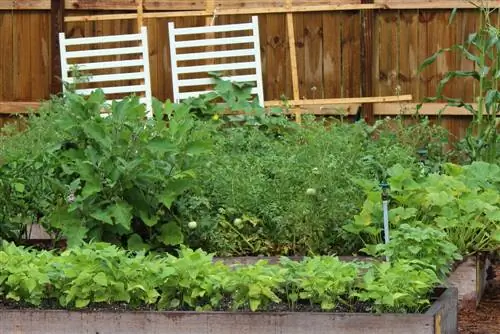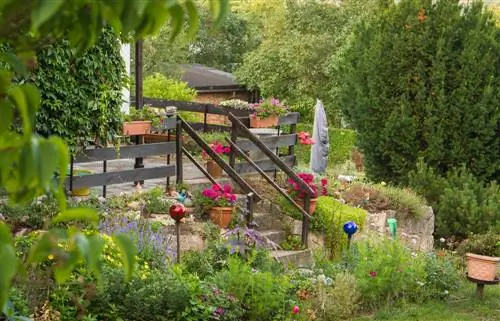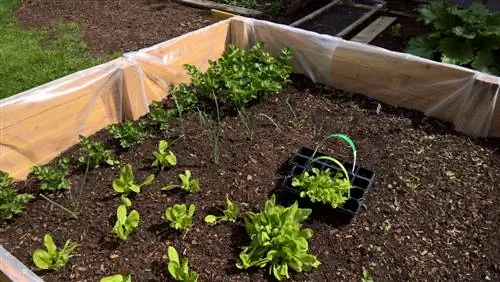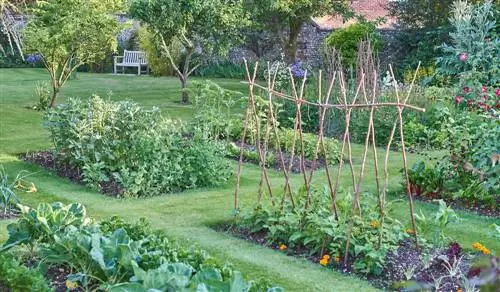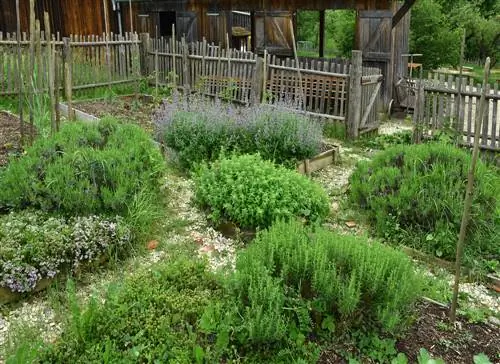- Author admin [email protected].
- Public 2023-12-16 16:46.
- Last modified 2025-01-23 11:21.
Raised beds can be used and designed in a variety of ways. The range extends from misused fruit or wine crates to elegant stone raised beds with ornamental plants as room dividers in the garden to smart table raised beds with herbs on the balcony or terrace. Before construction, however, careful planning must first be carried out.
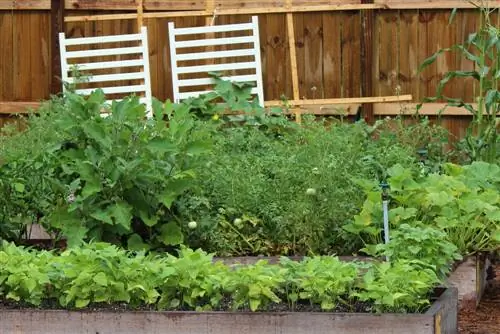
How do you plan a raised bed in the garden?
When planning a raised bed, the purpose, material and location should first be determined. Rectangular raised beds made of wood or plastic are suitable for growing vegetables, while models made of stone, metal or wicker are more suitable for decorative purposes.
The right raised bed for every garden
Before you create a raised bed, you should first think about your requirements - and which type of bed best meets them. You choose the material depending on your wallet and your personal preferences. But also make sure that the raised bed fits the style of your house and garden.
What purpose does the raised bed serve?
Should the raised bed be more of a part of the kitchen garden and primarily enable practical and back-friendly cultivation of vegetables? Then a rectangular and inexpensive variant made of boards or round wood is ideal. With a little craftsmanship you can easily build this type of raised bed yourself.
Suitable materials for building raised beds
Raised beds made of prefabricated plastic elements are even quicker and easier to build. The trade also offers kits for composters (€129.00 on Amazon) made of wooden slats, which can easily be converted into a raised bed. If you can invest a little more, you should choose more expensive but much longer-lasting hardwood for the bed. Do you want your raised bed construction to be even more durable? Then raised beds made of stone are the first choice. However, they are more complex to build and more expensive than wooden models.
A raised bed for vegetables
Vegetable raised beds need a sunny, warm and wind-protected place. Either you set them up in the vegetable garden or place them close to the house and terrace - then the harvest routes are short. If you have several raised beds, you should also leave enough space for paths for daily care. In addition, raised vegetable beds require a lot of effort to renew the substrate every few years.
A beautiful raised bed in the ornamental garden
If, on the other hand, the raised bed is not used to grow vegetables, but to redesign and beautify the garden, you should choose the material particularly carefully. In addition to raised beds made of stone, there are also raised beds made of metal, wicker or other materials. Raised beds for ornamental plants can also be created in almost any place, for example to structure and enhance the garden.
Tip
Raised beds are usually square. However, there are also round, polygonal or curved variants. These are first-class design elements, but require more space and are more complex to build than rectangular shapes.

